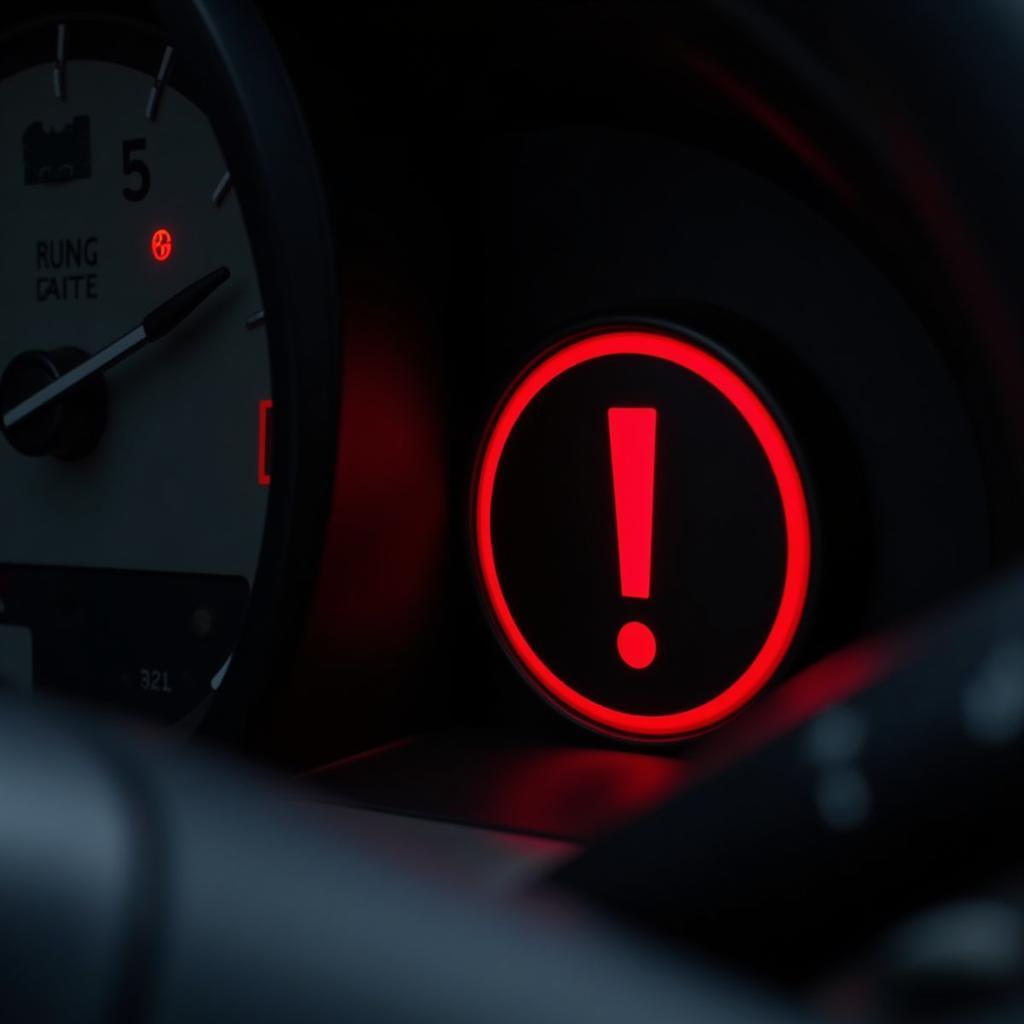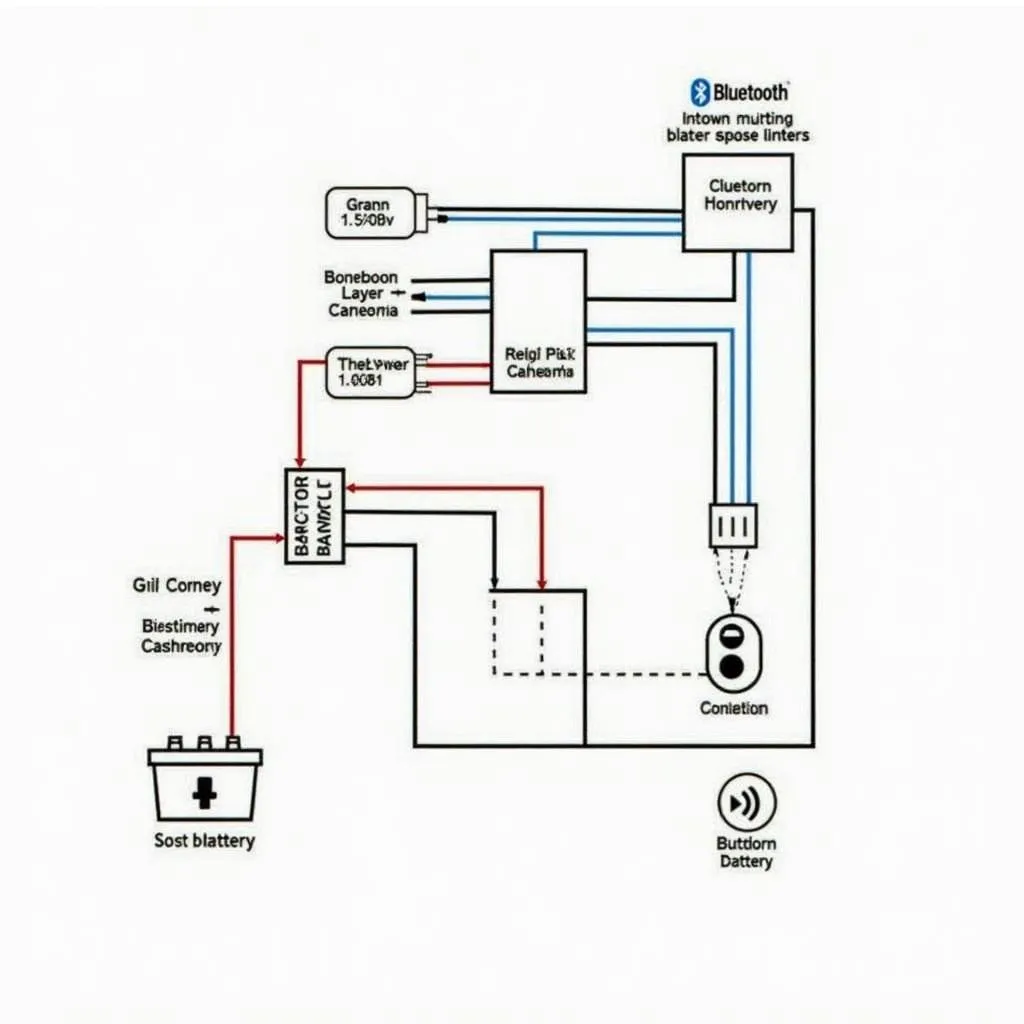The parking brake warning light, a frequent source of driver confusion, can indicate several issues ranging from a simple oversight to a more serious mechanical problem. This guide will delve into the common causes, diagnostic techniques, and solutions related to the parking brake warning light, empowering you to address this issue effectively.
Understanding the Parking Brake Warning Light
The parking brake warning light, typically a red exclamation mark within a circle or the letter “P” in parentheses, illuminates on the dashboard when the parking brake is engaged. However, if the light stays on even after releasing the brake, it signals a potential problem that requires attention. Ignoring this warning can lead to increased wear and tear, reduced fuel efficiency, and even safety hazards.
Common Causes of a Persistent Parking Brake Warning Light
Several factors can contribute to a continuously illuminated parking brake warning light. Let’s explore the most common culprits:
- Engaged Parking Brake: The simplest explanation is often the correct one. Double-check that the parking brake is fully released. Sometimes, it might only be partially disengaged, triggering the warning light.
- Low Brake Fluid: Low brake fluid is a serious issue and often the primary cause of a persistent warning light. This indicates a potential leak in the braking system, requiring immediate inspection and repair.
- Faulty Brake Light Switch: The brake light switch is responsible for activating both the brake lights and the parking brake warning light. A malfunctioning switch can cause both lights to stay on or behave erratically.
- Worn Brake Pads: While less common, worn brake pads can sometimes trigger the parking brake warning light, especially if they are excessively worn and the wear indicator is making contact.
- ABS Issues: Problems with the Anti-lock Braking System (ABS) can sometimes trigger various warning lights, including the parking brake light. This usually accompanies the ABS warning light.
 Parking Brake Warning Light on a Car Dashboard
Parking Brake Warning Light on a Car Dashboard
Diagnosing the Problem
Identifying the specific cause of the parking brake warning light requires a systematic approach:
- Check the Parking Brake: Ensure the parking brake is completely disengaged. Try rocking the car back and forth slightly to confirm.
- Inspect Brake Fluid Level: Check the brake fluid reservoir under the hood. If the level is low, there’s likely a leak that needs professional attention.
- Test Brake Lights: Verify that the brake lights are functioning correctly. If they’re not working, the brake light switch might be the culprit.
- Check for Worn Brake Pads: Visually inspect the brake pads through the wheel spokes. If they appear thin, have them checked by a mechanic.
 Mechanic Checking Brake Fluid Level
Mechanic Checking Brake Fluid Level
Solutions and Repairs
Once you’ve identified the problem, you can take the necessary steps to rectify it:
- Top up Brake Fluid: If the brake fluid is low, add the correct type of fluid until it reaches the recommended level. However, if the level drops again quickly, it indicates a leak that needs professional repair.
- Replace Brake Light Switch: Replacing a faulty brake light switch is a relatively simple and inexpensive repair.
- Replace Brake Pads: Worn brake pads should be replaced promptly to maintain optimal braking performance and safety.
- Address ABS Issues: ABS problems require specialized diagnostic tools and expertise, so it’s best to consult a qualified mechanic.
“Regular maintenance, including brake inspections, is crucial for preventing issues related to the parking brake warning light and ensuring overall vehicle safety,” advises John Miller, Senior Automotive Technician at Miller’s Auto Repair.
Using Remote Diagnostics and Programming
Remote diagnostics and programming offer a convenient way to identify and sometimes even resolve certain issues related to the parking brake warning light. These advanced tools allow technicians to access vehicle data remotely, diagnose problems, and even perform software updates without physical access to the car.
Conclusion
The parking brake warning light quizlet serves as an initial point of investigation, but a thorough understanding of its various causes and solutions is essential. By following the diagnostic steps outlined in this guide, you can effectively address the issue and maintain your vehicle’s safety and performance. Don’t hesitate to seek professional help if you encounter complex problems or suspect a serious mechanical fault. “Addressing warning lights promptly can prevent minor issues from escalating into major and costly repairs,” reminds Jane Doe, Lead Diagnostic Specialist at AutoTech Solutions.
FAQ
- What does the parking brake warning light look like? It’s usually a red exclamation mark within a circle or the letter “P” in parentheses.
- Can I drive with the parking brake warning light on? It’s not recommended as it can damage the brakes and reduce fuel efficiency.
- Is low brake fluid a serious issue? Yes, it indicates a potential leak in the braking system and requires immediate attention.
- How do I check my brake fluid level? Locate the brake fluid reservoir under the hood and check the fluid level against the minimum and maximum markings.
- Can I replace the brake light switch myself? It’s a relatively simple DIY task, but consult your vehicle’s manual for specific instructions.
- How often should I have my brakes inspected? It’s recommended to have your brakes inspected at least once a year or as specified in your vehicle’s maintenance schedule.
- Can remote diagnostics fix all parking brake issues? While remote diagnostics can identify many issues, physical repairs are often necessary.

